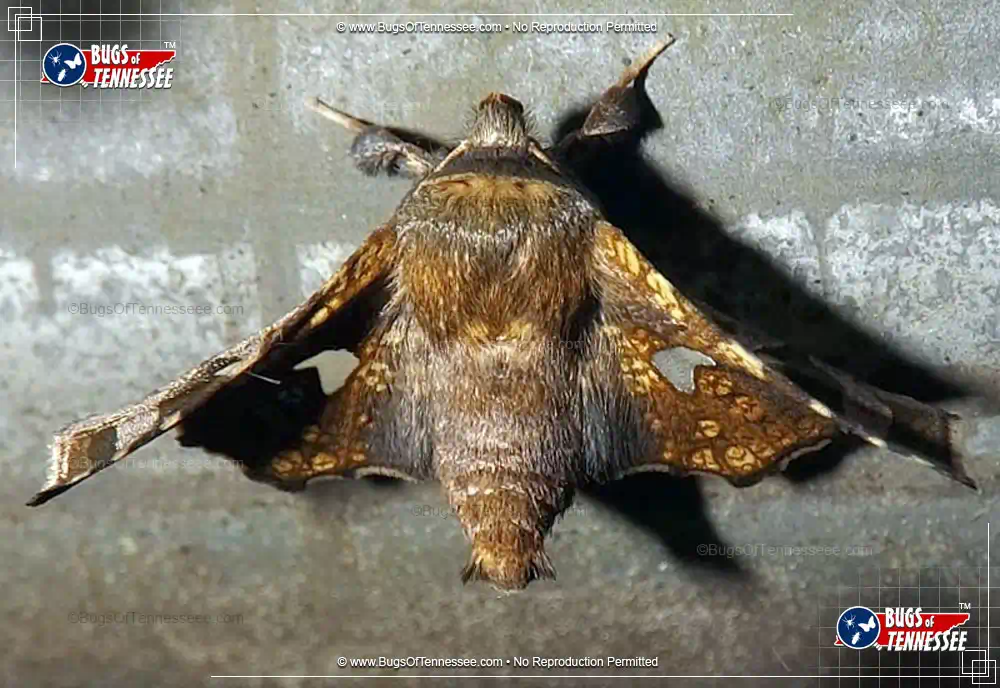Insect Order (Lepidoptera)
LEPIDOPTERA
Order Lepidoptera encompasses both Butterflies and Moths with around 12,000 species found across North America. Interestingly, Moths make up the greater number of the two with fewer than 1,000 being Butterfly species. The Butterfly-like 'Skipper' is also part of the group but noted for their shorter, stockier bodies. Butterflies and Moths are a very common sight throughout the state of Tennessee throughout the summer months, Butterflies found during the day and Moths more likely to be encountered during the evening / night time hours.
Taxonomy
The Taxonomic Breakdown is the scientific way to categorize a partocular insect species from its largest group (Animalia) to its smallest (variable). The Genus and Species categorizations taken together make up the species' scientific name shown above, in this case Dysodia oculatana.
Kingdom: Animalia
Phylum: Arthropoda
Class: Insecta
Order: Lepidoptera
Family: Thyrididae
Genus: Dysodia
Species: oculatana
Characteristics
Abdomen: Has a noticeably large / oversized abdomen.
Antenna: Antenna are noticeably apparent on this insect.
Nocturnal: Most likely to be spotted during night time hours.
Outdoors: Typically found across the great outdoors.
Six-Legged: Six legs are common to this insect.
Spotted Pattern: Noted for spots or spotted pattern.
Winged: Has wings to hop or fly over distance.
Description
The Eyed Dysodia Moth has been identified by site users by the following descriptors:
six-legged outdoors night dusk winged wings abdomen antenna hairy fuzzy furry spotted pattern yellow brown black red beige tan gray grey large
Sighting Guide
The general likelihood of encountering this insect based on a given month of the year in the state of Tennessee. Generally, the best sighting months are June through August with peak occurring in July.
Size
Below is a representation of the 'smallest-small' and 'largest-large' sizes commonly associated with the Eyed Dysodia Moth. Due to monitor differences, sizes may not be exact on your particular screen. Conversions to millimeters are provided for convenience.
Lowest-Low:
0.71 inches
(18 mm)
Highest-High:
0.83 inches
(21 mm)
Identifying Colors
Below you will find the colors most commonly associated with the Eyed Dysodia Moth. Both Primary and Secondary colors are represented in the showcase. Due to monitor differences, colors may not be exact representations.
Tennessee County Reach
The Eyed Dysodia Moth can be found in the following Tennessee counties:
Anderson; Bedford; Benton; Bledsoe; Blount; Bradley; Campbell; Cannon; Carroll; Carter; Cheatham; Chester; Claiborne; Clay; Cocke; Coffee; Crockett; Cumberland; Davidson; De Kalb; Decatur; Dickson; Dyer; Fayette; Fentress; Franklin; Gibson; Giles; Grainger; Greene; Grundy; Hamblen; Hamilton; Hancock; Hardeman; Hardin; Hawkins; Haywood; Henderson; Henry; Hickman; Houston; Humphreys; Jackson; Jefferson; Johnson; Knox; Lake; Lauderdale; Lawrence; Lewis; Lincoln; Loudon; Macon; Madison; Marion; Marshall; Maury; McMinn; McNairy; Meigs; Monroe; Montgomery; Moore; Morgan; Obion; Overton; Perry; Pickett; Polk; Putnam; Rhea; Roane; Robertson; Rutherford; Scott; Sequatchie; Sevier; Shelby; Smith; Stewart; Sullivan; Sumner; Tipton; Trousdale; Unicoi; Union; Van Buren; Warren; Washington; Wayne; Weakley; White; Williamson; Wilson
Eyed Dysodia Moth Picture (1)
1 of 1

Image of an adult Eyed Dysodia Moth at rest showing pattern and colors.; Credit: Alex -IcyCatElf- Bowen of Kentucky, USA.
This image is original to
www.InsectIdentification.org; Used with Permission.
